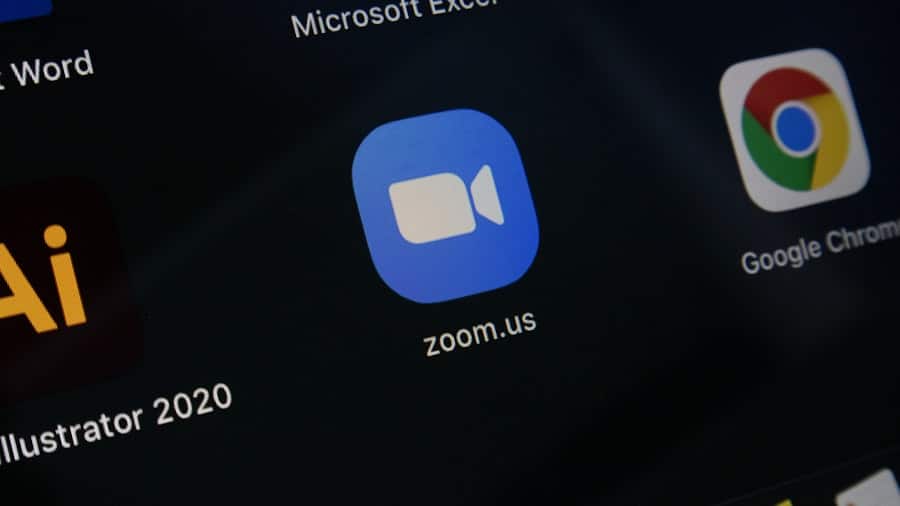The integration of mixed reality (MR) into healthcare has emerged as a transformative force, reshaping how medical professionals interact with patients and how they approach training and treatment. Mixed reality, which combines elements of both augmented reality (AR) and virtual reality (VR), allows for the overlay of digital information onto the real world, creating immersive experiences that can enhance understanding and engagement. This technology has gained traction in recent years, driven by advancements in hardware, software, and a growing recognition of its potential to improve patient outcomes and streamline medical processes.
One of the key factors contributing to the rise of mixed reality in healthcare is the increasing availability of affordable and sophisticated MR devices. Companies like Microsoft with its HoloLens and Magic Leap have developed headsets that enable healthcare professionals to visualize complex data in real-time while interacting with patients. This capability not only enhances the educational experience for medical students but also provides practicing clinicians with tools to better understand anatomy and pathology.
As healthcare systems continue to embrace digital transformation, the adoption of mixed reality is expected to accelerate, paving the way for innovative applications that can redefine patient care.
Key Takeaways
- Mixed reality is increasingly being used in healthcare for a variety of applications, from medical training to patient care and treatment.
- Advancements in medical training and education are being made through the use of mixed reality, allowing for more immersive and interactive learning experiences for healthcare professionals.
- Mixed reality is enhancing patient care and treatment by providing more accurate and personalized care, as well as improving patient outcomes.
- Surgical procedures are being improved with the use of mixed reality, allowing for better visualization and precision during operations.
- Virtual reality is being used for pain management and therapy, providing patients with alternative methods for managing and reducing pain.
Advancements in Medical Training and Education
Mixed reality is revolutionizing medical training and education by providing immersive learning experiences that traditional methods cannot match. Medical students and professionals can now engage in realistic simulations that replicate clinical scenarios, allowing them to practice skills in a safe environment. For instance, MR can simulate surgical procedures where students can visualize anatomy in 3D, manipulate organs, and even practice techniques without the risk of harming a patient.
This hands-on approach fosters deeper learning and retention of complex medical concepts. Moreover, mixed reality facilitates collaborative learning among students and instructors. With MR technology, multiple users can interact within the same virtual space, regardless of their physical location.
This capability is particularly beneficial for remote education, enabling institutions to connect students with expert instructors from around the world. For example, a group of medical students in one country can participate in a live surgical demonstration conducted by a renowned surgeon in another country, all while experiencing the procedure in an interactive 3D environment. Such advancements not only enhance the educational experience but also prepare future healthcare professionals for the increasingly digital landscape of medicine.
Enhancing Patient Care and Treatment
The application of mixed reality in patient care is proving to be a game-changer, offering innovative ways to enhance treatment and improve patient engagement. One notable example is the use of MR for patient education. By visualizing their conditions through interactive 3D models, patients can gain a clearer understanding of their diagnoses and treatment options.
This enhanced comprehension can lead to better decision-making and increased adherence to treatment plans. For instance, a patient diagnosed with a complex cardiac condition can view a 3D representation of their heart, allowing them to grasp the implications of their condition more fully. Additionally, mixed reality can facilitate more personalized treatment approaches.
By integrating patient-specific data into MR applications, healthcare providers can tailor interventions to meet individual needs. For example, an oncologist might use MR to visualize a tumor’s location and size in relation to surrounding tissues before discussing treatment options with a patient. This personalized approach not only empowers patients but also fosters a collaborative relationship between them and their healthcare providers, ultimately leading to improved health outcomes.
Improving Surgical Procedures with Mixed Reality
Surgical procedures are among the most critical areas where mixed reality is making significant strides.
This capability allows for real-time visualization of anatomical structures, vital signs, and even pre-operative imaging data without diverting attention from the surgical site.
For instance, during a complex spinal surgery, a surgeon can see a 3D model of the patient’s spine overlaid on their actual anatomy, guiding them through intricate maneuvers with greater precision. Furthermore, mixed reality can enhance surgical training by providing novice surgeons with realistic simulations that mimic actual procedures. Trainees can practice techniques repeatedly in a controlled environment before performing on real patients.
This not only builds confidence but also reduces the likelihood of errors during actual surgeries. Institutions like Johns Hopkins University have begun incorporating MR into their surgical training programs, demonstrating its potential to elevate surgical education and improve patient safety.
Virtual Reality for Pain Management and Therapy
Virtual reality has emerged as a powerful tool for pain management and therapeutic interventions within healthcare settings. By immersing patients in calming virtual environments, VR can distract them from pain during medical procedures or rehabilitation sessions. For example, burn patients undergoing wound care have reported reduced pain levels when engaged in VR experiences that transport them to serene landscapes or exciting adventures.
This distraction technique leverages the brain’s capacity to focus on immersive experiences rather than physical discomfort. In addition to pain management, VR is being utilized for therapeutic purposes in mental health care. Exposure therapy for conditions such as post-traumatic stress disorder (PTSD) can be enhanced through VR by recreating environments that trigger anxiety in a controlled manner.
Patients can confront their fears gradually while being supported by therapists who guide them through the process. Research has shown that VR-based exposure therapy can lead to significant reductions in symptoms for individuals suffering from PTSD, showcasing its potential as an effective treatment modality.
Telemedicine and Remote Patient Monitoring
Enhancing Virtual Consultations
Mixed reality technologies are playing a crucial role in enhancing virtual consultations and remote patient monitoring capabilities. Healthcare providers can utilize MR tools to conduct more interactive telehealth sessions, allowing them to visualize patient data and medical histories while engaging with patients in real-time.
Improving Patient Engagement
For instance, during a telemedicine appointment, a physician could use mixed reality to display diagnostic images or lab results alongside the patient’s video feed. This integration allows for more comprehensive discussions about treatment options and fosters a sense of connection between patients and providers despite physical distance.
Real-time Remote Monitoring
Additionally, remote monitoring devices equipped with MR capabilities can provide healthcare professionals with real-time insights into patients’ conditions, enabling timely interventions when necessary. This technology has the potential to revolutionize the way healthcare providers deliver care to their patients.
Mixed Reality for Rehabilitation and Physical Therapy
Rehabilitation and physical therapy are areas where mixed reality is making significant contributions by enhancing patient engagement and motivation during recovery processes. Traditional rehabilitation exercises can often be monotonous and uninspiring for patients; however, MR introduces gamification elements that make therapy more enjoyable. Patients can participate in interactive exercises that track their progress while immersing them in virtual environments designed to stimulate movement and engagement.
These applications can create scenarios where patients must reach for virtual objects or navigate through obstacles, encouraging them to perform movements that promote recovery. Research has indicated that such immersive experiences not only improve adherence to rehabilitation programs but also lead to better functional outcomes compared to conventional therapy methods.
Ethical and Privacy Considerations in Mixed Reality Healthcare Applications
As mixed reality technologies become more integrated into healthcare practices, ethical and privacy considerations must be addressed to ensure patient safety and trust. The collection and use of sensitive health data within MR applications raise concerns about data security and patient confidentiality. Healthcare providers must implement robust measures to protect patient information from unauthorized access or breaches while ensuring compliance with regulations such as HIPAA (Health Insurance Portability and Accountability Act).
Moreover, ethical dilemmas may arise regarding informed consent when using MR technologies for treatment or training purposes. Patients should be fully informed about how their data will be used and the potential risks associated with MR applications. Additionally, there is a need for ongoing discussions about the implications of relying on technology for critical aspects of healthcare delivery.
Balancing innovation with ethical considerations will be essential as mixed reality continues to evolve within the healthcare landscape, ensuring that advancements benefit both patients and providers while maintaining trust in the system.
A related article to “How Mixed Reality Is Powering the Future of Digital Healthcare” is “The Best Headphones for 2023”. This article discusses the latest advancements in headphone technology and how they are shaping the way we listen to music and consume audio content. Just as mixed reality is revolutionizing healthcare, cutting-edge headphones are transforming the way we experience sound. Both articles highlight the innovative ways technology is enhancing various aspects of our lives.
FAQs
What is mixed reality in the context of digital healthcare?
Mixed reality in digital healthcare refers to the merging of real and virtual worlds to produce new environments and visualizations where physical and digital objects coexist and interact in real time. This technology allows healthcare professionals to visualize and interact with medical data and virtual objects in the real world, enhancing their ability to diagnose, treat, and educate patients.
How is mixed reality being used in digital healthcare?
Mixed reality is being used in digital healthcare for a variety of applications, including medical training and education, surgical planning and navigation, patient rehabilitation, and telemedicine. It enables healthcare professionals to visualize complex medical data, perform virtual simulations, and collaborate with colleagues in real time, ultimately improving patient care and outcomes.
What are the benefits of using mixed reality in digital healthcare?
The use of mixed reality in digital healthcare offers several benefits, including enhanced visualization of medical data, improved surgical precision, increased patient engagement and understanding, and expanded access to specialized care through telemedicine. It also has the potential to reduce medical errors, streamline workflows, and lower healthcare costs.
What are some examples of mixed reality applications in digital healthcare?
Examples of mixed reality applications in digital healthcare include using augmented reality for medical training and education, using virtual reality for patient rehabilitation and pain management, and using holographic visualization for surgical planning and navigation. Additionally, mixed reality is being used to create immersive telemedicine experiences that connect patients with healthcare providers remotely.



